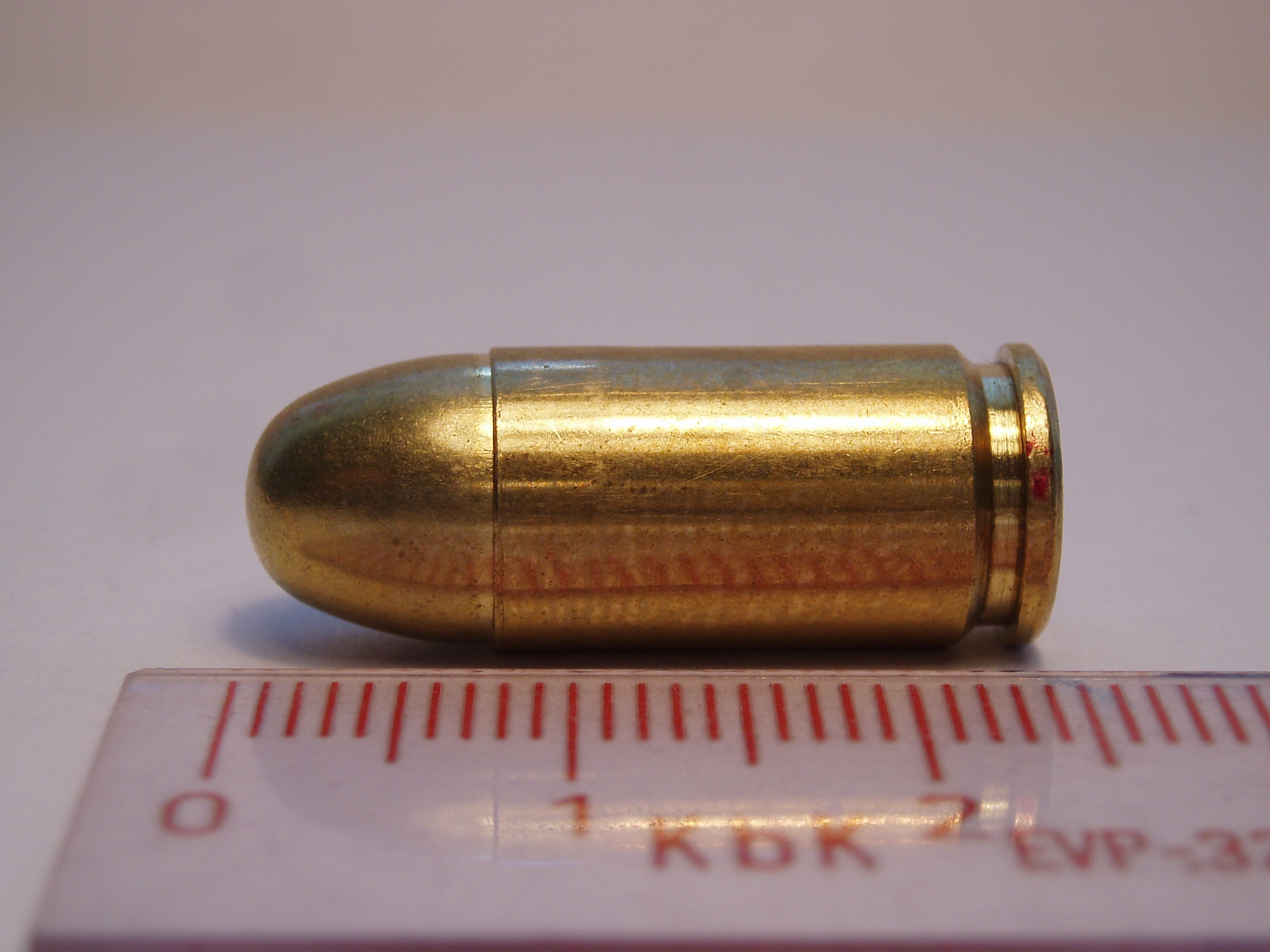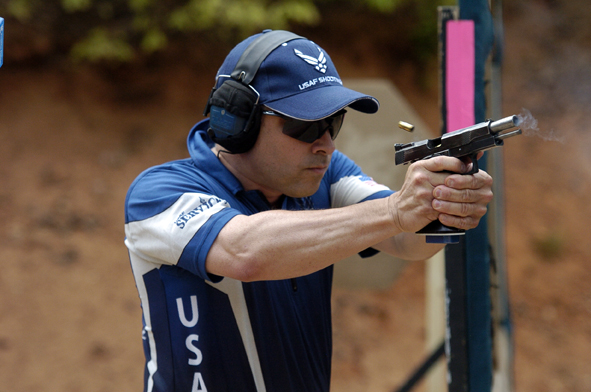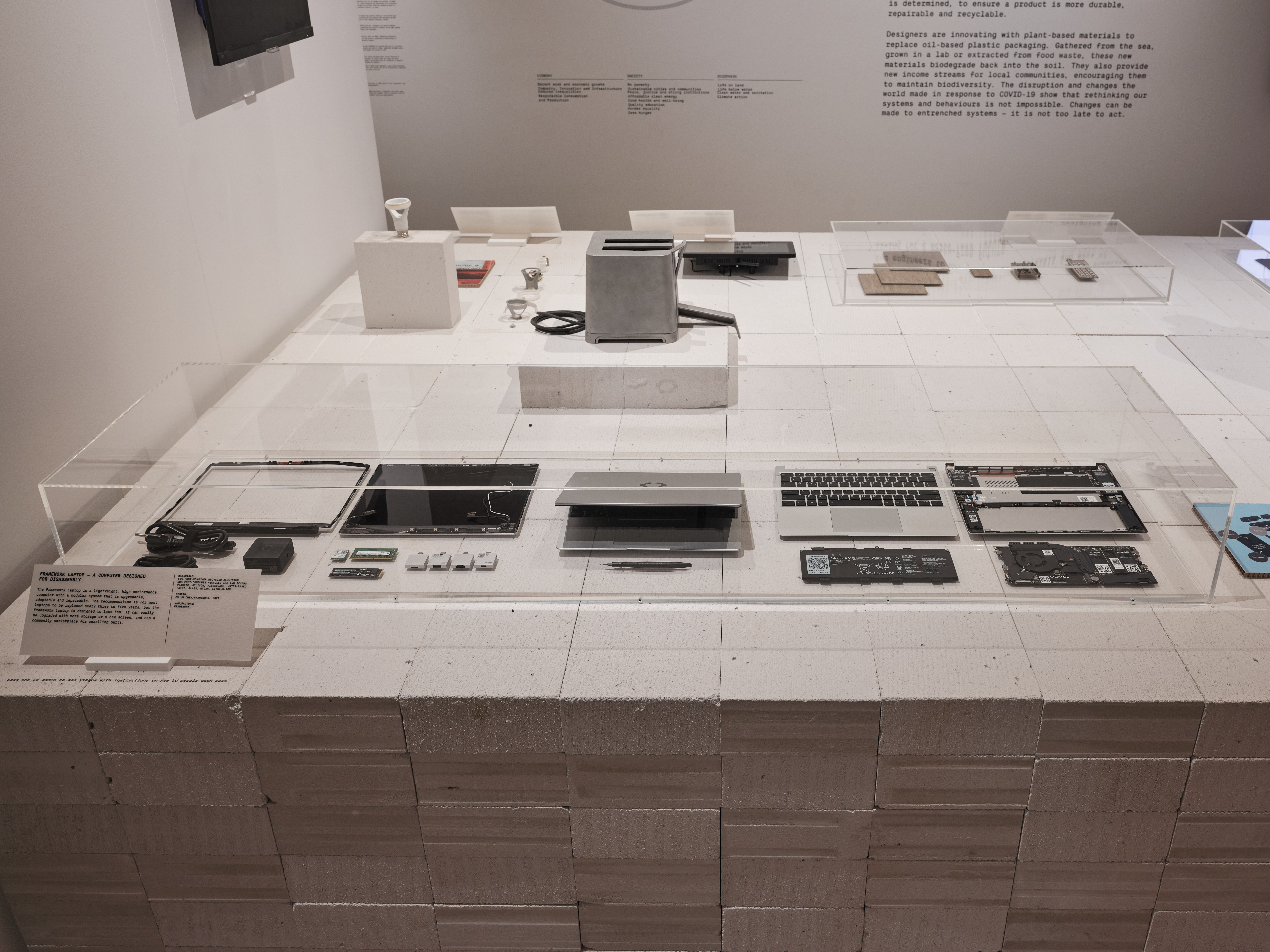|
Beretta Px4 Storm
The Beretta Px4 Storm is a semi-automatic pistol intended for personal defense and law enforcement use. Design The Px4 uses a trigger and safety system similar to the Beretta 92 and the Beretta 8000 series, though it is distinguished from its predecessors by its light-weight polymer construction with steel inserts, standard Picatinny rail, and swappable grip backstraps. Unlike the Beretta 92FS/96FS/M9/M9A1 and the 8000 series pistols, the Px4's trigger guard is rounded rather than squared. The polymer guide rod has a captive slide spring. The full size (including the Px4 .45 ACP) and Compact versions are manufactured in Italy. The Px4 Subcompact is manufactured in the United States. Action system The full size and Compact versions use the same short-recoil, rotating barrel action as the Beretta 8000 series, whereas the Subcompact uses the tilt barrel system. The full size and Compact versions have a spring-loaded disassembly bar, accessed via recesses on both sides of the fr ... [...More Info...] [...Related Items...] OR: [Wikipedia] [Google] [Baidu] |
Semi-automatic Pistol
A semi-automatic pistol (also called a self-loading pistol, autopistol, or autoloading pistol) is a repeating firearm, repeating handgun that automatically ejects and loads cartridge (firearms), cartridges in its chamber (firearms), chamber after every shot fired, but only one round of ammunition is fired each time the Trigger (firearms), trigger is pulled. The pistol's fire control group disconnects the trigger mechanism from the firing pin/striker until the trigger has been released and reset manually, unlike the self-cycled firing mechanism in machine pistol, fully automatic pistols. A semi-automatic pistol recycles part of the energy released by the propellant combustion to move its bolt (firearm), bolt, which is usually housed inside the pistol slide, slide. After a round of ammunition is fired, the spent cartridge casing is extracted and ejected as the slide/bolt moves rearwards under recoil, the hammer (firearms), hammer/striker is cocked by the slide/bolt movement, and a ... [...More Info...] [...Related Items...] OR: [Wikipedia] [Google] [Baidu] |
Rifling
Rifling is the term for helical grooves machined into the internal surface of a firearms's barrel for imparting a spin to a projectile to improve its aerodynamic stability and accuracy. It is also the term (as a verb) for creating such grooves. The opposite of rifling is smoothbore. Rifling is measured in ''twist rate'', the distance the rifling takes to complete one full revolution, expressed as a ratio with 1 as its base (e.g., 1:). A shorter distance/lower ratio indicates a faster twist, generating a higher spin rate (and greater projectile stability). The combination of length, weight, and shape of a projectile determines the twist rate needed to gyroscopically stabilize it: barrels intended for short, large-diameter projectiles such as spherical lead balls require a very low twist rate, such as 1 turn in 48 inches (122 cm). Barrels intended for long, small-diameter projectiles, such as the ultra-low-drag 80-grain 0.223 inch bullets (5.2 g, 5.56&nb ... [...More Info...] [...Related Items...] OR: [Wikipedia] [Google] [Baidu] |
Joint Combat Pistol
The Joint Combat Pistol was the name for a former US program for a new military sidearm to replace the M9 Pistol, extant from late 2005 to early 2006. The program was started in 2005 and run by USSOCOM. It was the result of a merger of two earlier programs, the army's ''Future Handgun System'' (FHS) and the ''Special Operations Forces Combat Pistol''. Requirements for the JCP included being chambered for caliber .45 ACP, having an integrated Picatinny rail, including day/night sights, and being capable of accepting a suppressor. On March 10, 2006, a modification to the earlier request was made, changing the name from ''Joint Combat Pistol'' to ''Combat Pistol''. The number of pistols sought was reduced from 645,000 handguns to 50,000. This effectively reverted to the ''SOF Combat Pistol'' program in terms of its scale, as the army dropped its participation. In the autumn of 2006, the Combat Pistol (CP) program was suspended indefinitely. In a 2007 supplemental session, the congr ... [...More Info...] [...Related Items...] OR: [Wikipedia] [Google] [Baidu] |
9mm Luger
This is a list of firearm cartridges that have bullets in the to caliber In guns, particularly firearms, but not #As a measurement of length, artillery, where a different definition may apply, caliber (or calibre; sometimes abbreviated as "cal") is the specified nominal internal diameter of the gun barrel Gauge ( ... range. *''Case length'' refers to the round case length. *''OAL'' refers to the overall length of the loaded round. All measurements are given in millimeters, followed by the equivalent in inches between parentheses. *Ammunition or cartridge specification is usually the "cartridge maximum" specification and may not be the same as the nominally measured dimensions of production, remanufactured, or hand-loaded ammunition. * SAAMI and the CIP publish cartridge data. Pistol cartridges Revolver cartridges Rifle cartridges See also * .38 caliber * 9mm Major References {{Firearm cartridge calibers Pistol and rifle cartridges de:9 mm ... [...More Info...] [...Related Items...] OR: [Wikipedia] [Google] [Baidu] |
Decocker
Close-up shot of a safety of an M16A2 rifle In firearms, a safety or safety catch is a mechanism used to help prevent the accidental discharge of a firearm, helping to ensure safer handling. Safeties generally can be divided into subtypes such as internal safeties (which typically do not receive input from the user) and external safeties (which typically allow the user to give input, for example, toggling a lever from "safe" to "fire" or something similar). Sometimes these are called "passive" and "active" safeties (or "automatic" and "manual"), respectively. External safeties typical work by prevent the trigger pull or prevent the firing pin from detonating the cartridge or both. Firearms with the ability to allow the user to select various fire modes may have separate switches for safety and for mode selection (e.g. Thompson submachine gun) or may have the safety integrated with the mode selector as a fire selector with positions from safe to semi-automatic to full-autom ... [...More Info...] [...Related Items...] OR: [Wikipedia] [Google] [Baidu] |
USPSA Handgun Championship
The USPSA Handgun Championships are yearly championships held by the United States Practical Shooting Association (USPSA) run under USPSA-rules (contrary to the IPSC US Handgun Championship). Sometimes, all of the pistol nationals are held at the same time, other years, they have been broken up between different ranges. In order to attend one of the pistol nationals, a competitor usually has to win a "slot", usually by placing well enough at various regional and Area Championship matches held throughout the year. Champions The following is a list of current and previous champions. Overall category Lady category See also *USPSA Multigun Championship *IPSC US Handgun Championship *IPSC Handgun World Shoots The IPSC Handgun World Shoot is the highest level handgun match within the International Practical Shooting Confederation (IPSC) which consists of several days and at least 30 separate courses of fire. The Handgun World Shoots are held triennia ... References {{refl ... [...More Info...] [...Related Items...] OR: [Wikipedia] [Google] [Baidu] |
Concealed Carry
Concealed carry, or carrying a concealed weapon (CCW), is the practice of carrying a weapon (usually a sidearm such as a handgun), either in proximity to or on one's person or in public places in a manner that hides or conceals the weapon's presence from surrounding observers. In the United States, the opposite of concealed carry is called open carry. While most law enforcement officers carry their handguns in a visible holster, some officers such as plainclothes detectives or undercover agents carry weapons in concealed holsters. In some countries and jurisdictions, civilians are legally required to obtain a concealed carry permit in order to possess and carry a firearm. In others, a CCW permit is only required if the firearm is not visible to the eye, such as carrying the weapon in one's purse, bag, trunk, etc. By country United States Concealed carry is legal in most jurisdictions of the United States. A handful of states and jurisdictions severely restrict or b ... [...More Info...] [...Related Items...] OR: [Wikipedia] [Google] [Baidu] |
Trigger (firearms)
A trigger is a mechanism (engineering), mechanism that Actuator, actuates the function of a ranged weapon such as a firearm, airgun, crossbow, or speargun. The word may also be used to describe a switch that initiates the operation of other non-shooting devices such as a animal trap, trap, a power tool, or a quick release. A small amount of energy applied to the trigger leads to the release of much more energy. Most triggers use a small flat or slightly curved lever (called the ''trigger blade'') depressed by the index finger, but some weapons such as the M2 Browning machine gun or the Iron Horse TOR ("thumb-operated receiver") use a push-button-like thumb-actuated trigger design, and others like the Springfield Armory M6 Scout use a squeeze-bar trigger similar to the "ticklers" on crossbow#Medieval Europe, medieval European crossbows. Although the word "trigger" technically implies the entire mechanism (known as the ''trigger group''), colloquially it is usually used to refer ... [...More Info...] [...Related Items...] OR: [Wikipedia] [Google] [Baidu] |
Double-action
Double action (or double-action) refers to one of two systems in firearms where the trigger both cocks and releases the hammer. * Double-action only (DAO) firearms trigger: The trigger both cocks and releases the hammer. There is no single-action function and the hammer will return to its decocked position after each shot. **Double Action Kellerman (DAK): A variant of traditional double-action used on certain SIG Sauer semi-automatic pistols. DAK triggers have a long stroke with pull. However, if a user shooting under stress short-strokes the trigger by only releasing it halfway, the trigger will reset, but with a pull. This temporary increased trigger pull is intended to prevent negligent discharges. * Double-action – firearms trigger: Pressing the trigger 1) cocks, and 2) drops the hammer. The hammer can also be cocked to fire in single-action (SA) mode. ** With a DA revolver, the hammer can be cocked first (single action), or the trigger can be pulled and it will cock a ... [...More Info...] [...Related Items...] OR: [Wikipedia] [Google] [Baidu] |
Single-action
A trigger is a mechanism that actuates the function of a ranged weapon such as a firearm, airgun, crossbow, or speargun. The word may also be used to describe a switch that initiates the operation of other non-shooting devices such as a trap, a power tool, or a quick release. A small amount of energy applied to the trigger leads to the release of much more energy. Most triggers use a small flat or slightly curved lever (called the ''trigger blade'') depressed by the index finger, but some weapons such as the M2 Browning machine gun or the Iron Horse TOR ("thumb-operated receiver") use a push-button-like thumb-actuated trigger design, and others like the Springfield Armory M6 Scout use a squeeze-bar trigger similar to the "ticklers" on medieval European crossbows. Although the word "trigger" technically implies the entire mechanism (known as the ''trigger group''), colloquially it is usually used to refer specifically to the trigger blade. Most firearm triggers are "s ... [...More Info...] [...Related Items...] OR: [Wikipedia] [Google] [Baidu] |
Modular Design
Modular design, or modularity in design, is a design principle that subdivides a system into smaller parts called ''modules'' (such as modular process skids), which can be independently created, modified, replaced, or exchanged with other modules or between different systems. Overview A modular design can be characterized by functional partitioning into discrete scalable and reusable modules, rigorous use of well-defined modular interfaces, and making use of industry standards for interfaces. In this context modularity is at the component level, and has a single dimension, component slottability. A modular system with this limited modularity is generally known as a platform system that uses modular components. Examples are car platforms or the USB port in computer engineering platforms. In design theory this is distinct from a modular system which has higher dimensional modularity and degrees of freedom. A modular system design has no distinct lifetime and exhibits flexibility i ... [...More Info...] [...Related Items...] OR: [Wikipedia] [Google] [Baidu] |










